Contents
|
Easier to Identify Accounts on Dashboard Widgets Expanded Data Points on Reports Pages |
Integrations
Manage Redtail Integration
For those of you who use Redtail, the Tamarac integration offers a seamless connection from your Tamarac Reporting data to your client data in Redtail. This integration ensures that the data you manage in Tamarac flows smoothly into Redtail, helping you maintain consistency across both platforms.
With this release, we’ve enhanced the Tamarac/Redtail integration by providing you with direct access to manage syncing in Tamarac Reporting.

In your Tamarac Reporting profile, you can now use the following option to manage the Redtail integration:
-
Enable Redtail file export: Sends account information from Tamarac to Redtail once a day, ensuring your client data in Redtail remains current.
For more information about the Redtail integration features, see Redtail Integration.
New Client Portal
Easier to Identify Accounts on Dashboard Widgets
When your clients are looking at a dashboard widget, it's important that they know what account or group it's showing data for. This release, based on your feedback, we’ve brought the account selection front and center on the widget.
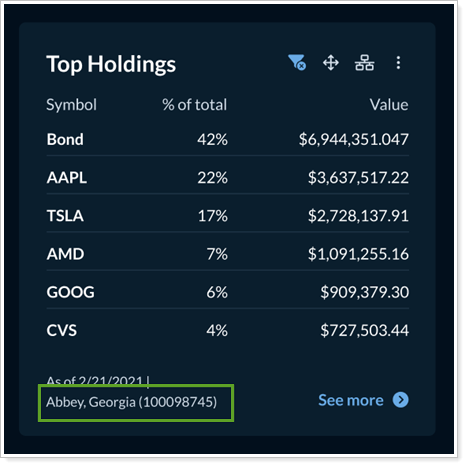
The previous method of viewing data source using the account tree button ![]() remains available, as this will continue to be valuable in showing what accounts comprise All Accounts or a grouping of accounts.
remains available, as this will continue to be valuable in showing what accounts comprise All Accounts or a grouping of accounts.
Expanded Data Points on Reports Pages
As we continue to expand the new client portal to match the existing legacy portal, we introduce the following enhancements to a variety of Reports pages.
Holdings report
We have added the Open Date column to the column selector for the main table. This column will show the position level open date.
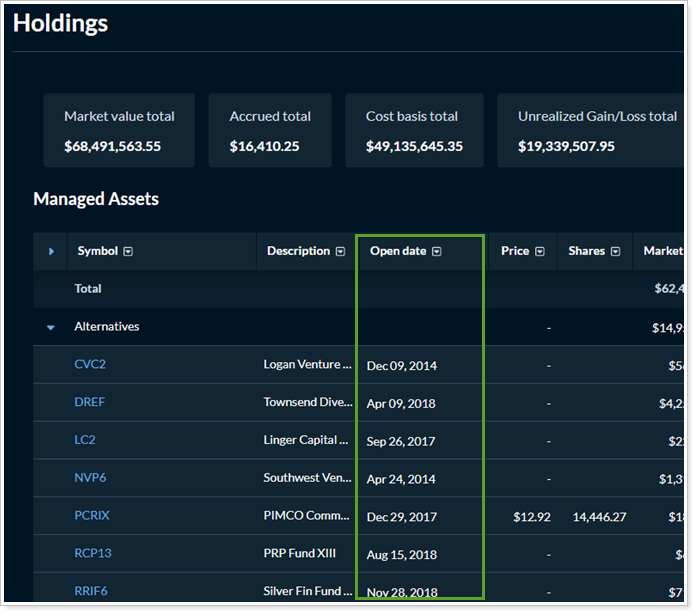
Realized Gains/Losses report
To give you a more robust view of gains and losses in accounts, we've added the following columns to the Realized Gains/Losses report:
-
Source of record: Shows where the transactions in the report receive data from. This is generally the custodian or Tamarac Reporting.
-
Unit cost: Shows holdings value in correlation with cost basis.
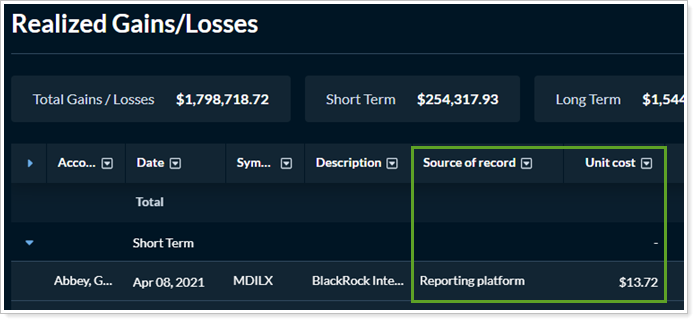
Income and Expenses report
To help you provide transparency and give your clients a better understand how you are managing their investments, we've added the following custom columns that let you upload notes to the Income and Expenses report:
-
Notes.
-
Extended Notes.
These notes appear in the lot-level panel of the report.
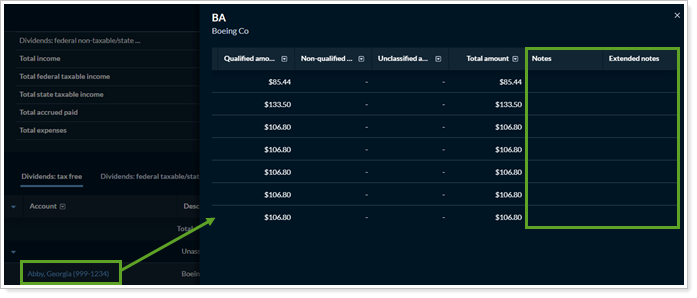
Account Performance report
With this release, the New Client Portal Account Performance report gives you greater control over additional indexes and when to include or exclude performance, allowing you to focus the report appropriately.
-
Add more indexes. Add any index on the platform to your Account Performance report table and chart, just as you do in the legacy Client Portal.
-
Show or hide position-level performance. Choose to show or hide position level performance to appear when grouped by account or category. This is accomplished with the When expanding a group, show setting.
Show Capital Gains Distributions as a Report Page
To give you and your clients more robust insights into their capital gains situation, with this release you can create a Capital Gains Distributions report. Based on Realized Gains/Losses data, it acts as its own report type in the New Client Portal. This gives you greater flexibility in showing clients details of their capital gains distributions separately from other gains and losses.
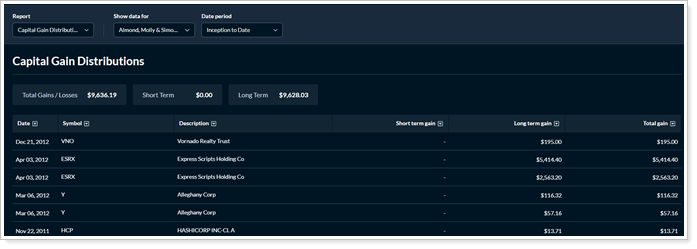
To add a Capital Gains Distribution page, in the Configuration tool, under Widgets & pages, in Pages, search for and add Capital Gains Distribution.

Configure the settings and add it to Report templates as desired.
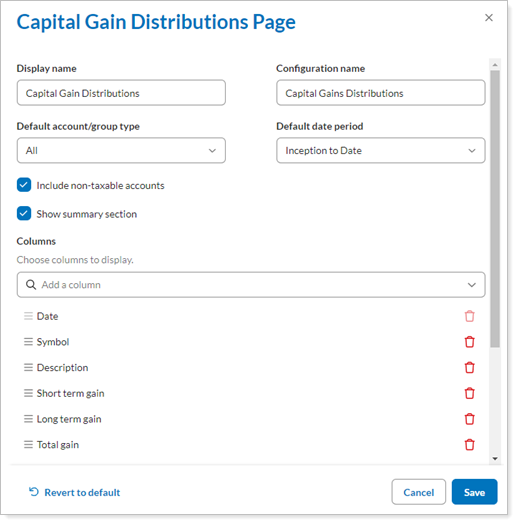
See Intra-Day Values on the Summary Widget
Timeliness matters in financial decisions. That's why, with this release, you can set up the Summary widget on the New Client Portal dashboard to provide summary data points that reflect current day changes enabling your clients them to see real time how a days events are effecting their portfolio.
Now the Summary widget will allow you to select from traditional summary data points or a view that offers intra-day values. If your firm has intra-day pricing enabled, when you configure the widget, you can turn on intra-day data. After selection, the Configuration tool will provide you with new settings options that you can configure specifically to display intra-day values.

